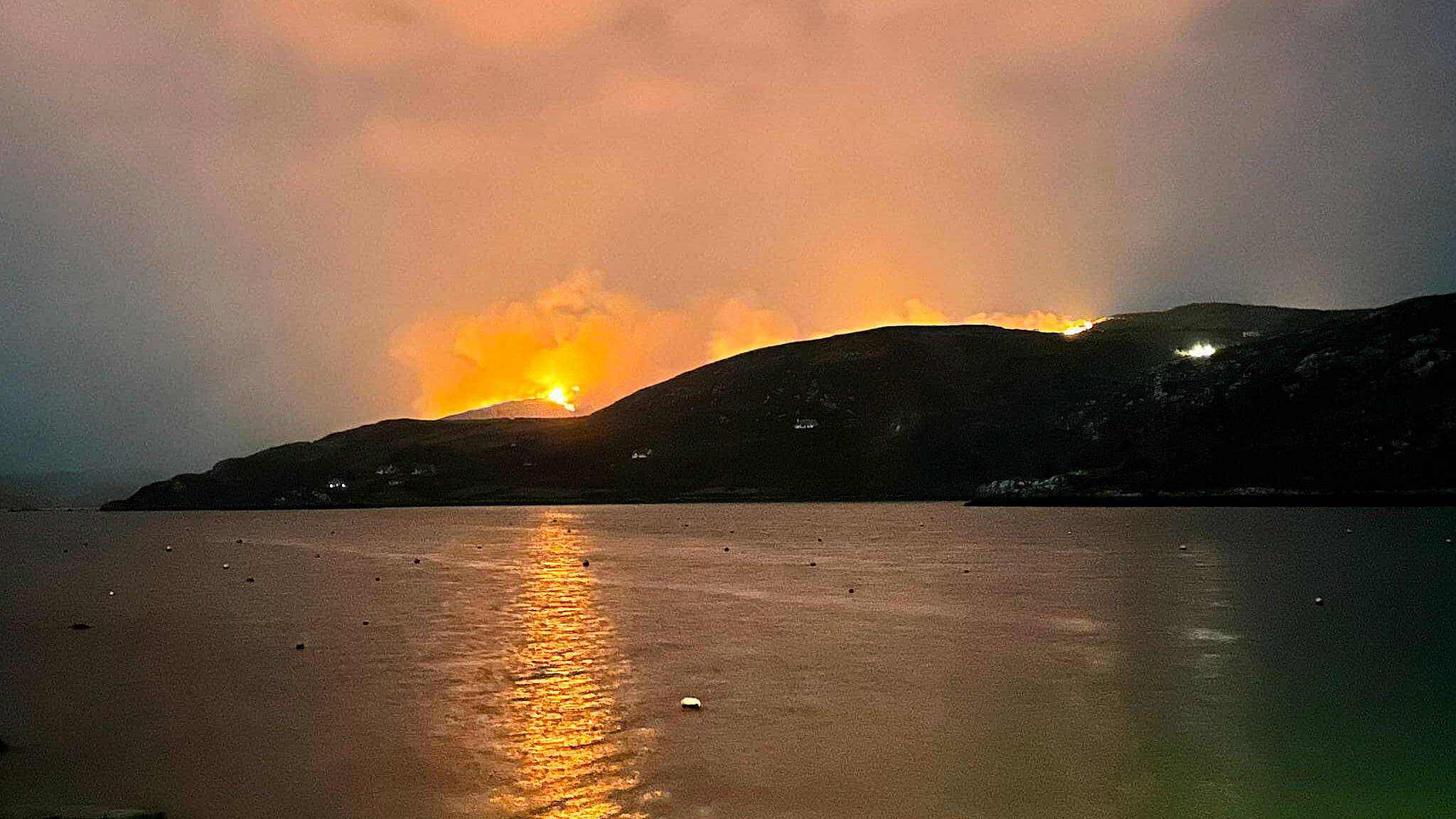EDITOR – I would like to draw the attention of your readers to the fires set on the Mizen peninsular, causing widespread destruction to the townlands of Dough, Letter, Killeane and Arduslough, on Sunday February 9th and Monday February 10th.
Most of this land is not farmed, it is an area of outstanding natural beauty and is designated a ‘special area of conservation.’
There is utter devastation to wildlife.
I watched scores of crows and birds of prey swarming over dead and dying creatures and the savage obliteration of habitats.
Moreover, I watched, for hours, the parents of young children, wearing firemen’s and firewomen’s uniforms beating out raging fires on almost inaccessible rocky terrain, in the dark of night, the lights on their helmets glinting white – the only way of distinguishing them from the orange and red flames.
At least four properties have been saved as a result of their tireless efforts.
These firemen and women were fighting multiple fires for more than 24 hours.
Who would do this to the mechanics who repair your car, or the fellow who would serve you a kilo of mince in the local supermarket, or supply you with a bag of fertiliser from Drinagh?
I could go on, but I just want to put some human faces on the people these fire setters put in mortal danger.
Isn’t it about time that the arsonists were brought to account, sought out and punished in such a way as to deter further, would-be, arsonists?
There are people in the community who know who these pyromaniacs are and it should be their civic duty to report them in order that people may feel safe in their homes, to protect our beautiful natural heritage, and not to add to the dangers our dedicated, volunteer fire workers face.
Mary O’Meara,
Goleen.
 The fires in Barleycove last week. (Photo: Magda O’Driscoll)
The fires in Barleycove last week. (Photo: Magda O’Driscoll)
Relentless pursuit of the badger will not fix TB
EDITOR – TB or not be TB, that was the question answered in 2004 with €100.616m of taxpayers’ money.
That amount was spent on ‘The National Bovine Tuberculosis (TB) Eradication Programme’ which aims to eliminate this disease from the national cattle herd.
Ireland’s first bovine TB eradication (bTB) programme was started as far back as 1950 and became compulsory throughout the country by 1962.
In keeping with a good Shakespearian play, a villain has been identified in this ongoing rural drama.
The badger has been accused of being central to the spread of bTB.
Farming and government representatives engage in anti-badger misinformation devoid of scientific merit or understanding of badger behaviour.
The snaring of badgers is another wire based strand of the bTB eradication programme.
Each year badgers are snared and shot under licence shamefully issued by the Department of Heritage’s National Parks and Wildlife Service.
This killing takes place even though the majority of badgers (80%) cruelly snared and shot by Department contractors and later tested for bTB were found to not have the disease.
The killing of badgers at the behest of the Department of Agriculture is a State-approved brutal pogrom against badgers.
When it is traffic-sign clear that killing badgers by snare or rifle will not eradicate or contain bTB, those with a skin in the disease game persist in walking the cul-de-sac badger trail.
Money and research studies have tracked the ebb and flow of bTB on Irish farms.
In 2025, the disease has cemented itself into the rural environment with an acceptance that a bTB eradication policy is futile and that a containment policy is best practice.
A scientific, effective, and humane bTB control strategy that is cattle-based would eliminate any reason to kill badgers.
The relentless pursuit of this bTB scapegoat not only squanders taxpayer money but also distracts from the solutions that lie within the farmer’s farmyard and not the badger sett.
John Tierney
Campaigns director,
Association of Hunt Saboteurs,
Dublin 1.
Crazy policy on felling trees has to change
EDITOR – During recent storms countless outages of electricity happened due to dangerous trees falling on power lines and disrupting power supply.
These same trees cannot be touched during the summer months because the birds need to nest in them.
I ask one question – if you were a bird, would you nest on the side of a motorway?
How many fatal accidents caused by falling trees have to happen before this crazy policy has to change?
Michael Hallissey
Mayfield, Bandon.
We should appreciate our drystone walls
EDITOR – Drystone construction has been officially inscribed on the Unesco representative list of the intangible cultural heritage of humanity.
One of the features of drystone walls is that they use local material and the quality of this dictates the style of building, leading to a very important sense of place.
Hence, the drystone wall is at the very heart of our heritage and should be held in the greatest esteem, at both local national level.
Drystone walls, built of local material by local craftspeople, will always be a joy to behold.
Beibhinn Marten,
Rath,
Baltimore.
Salmon numbers are continuing to fall
EDITOR – The salmon in our rivers and seas will be extinct before too long with 10,000 killed in the Lee in Cork, due to pollution.
The numbers returning to our rivers to spawn have fallen considerably in recent years.
The wild salmon numbers returning to Ireland have fallen from 1.8m to just 171,700.
Salmon Watch Ireland and this Government should be very concerned at the decline in wild salmon reaching our shores.
During their migration they may also become infected by sea lice passing salmon farms in Scotland and the Norwegian coast.
Salmon fishing used be a big money spinner for our anglers in the 70s.
Not anymore, as a lot of anglers are hanging up their rods.
The Bandon river is another issue where salmon cannot get up there to spawn, due to flooding repairs.
Noel Harrington,
Kinsale.








